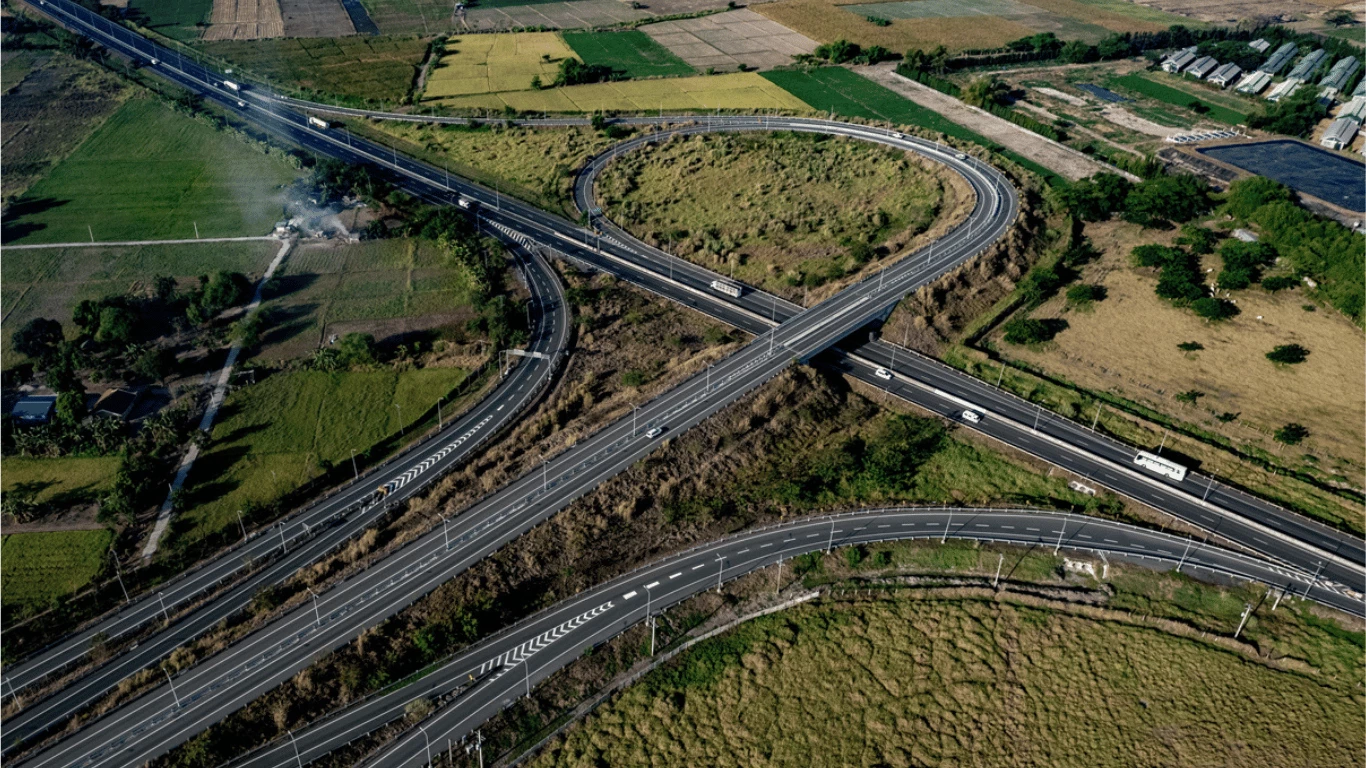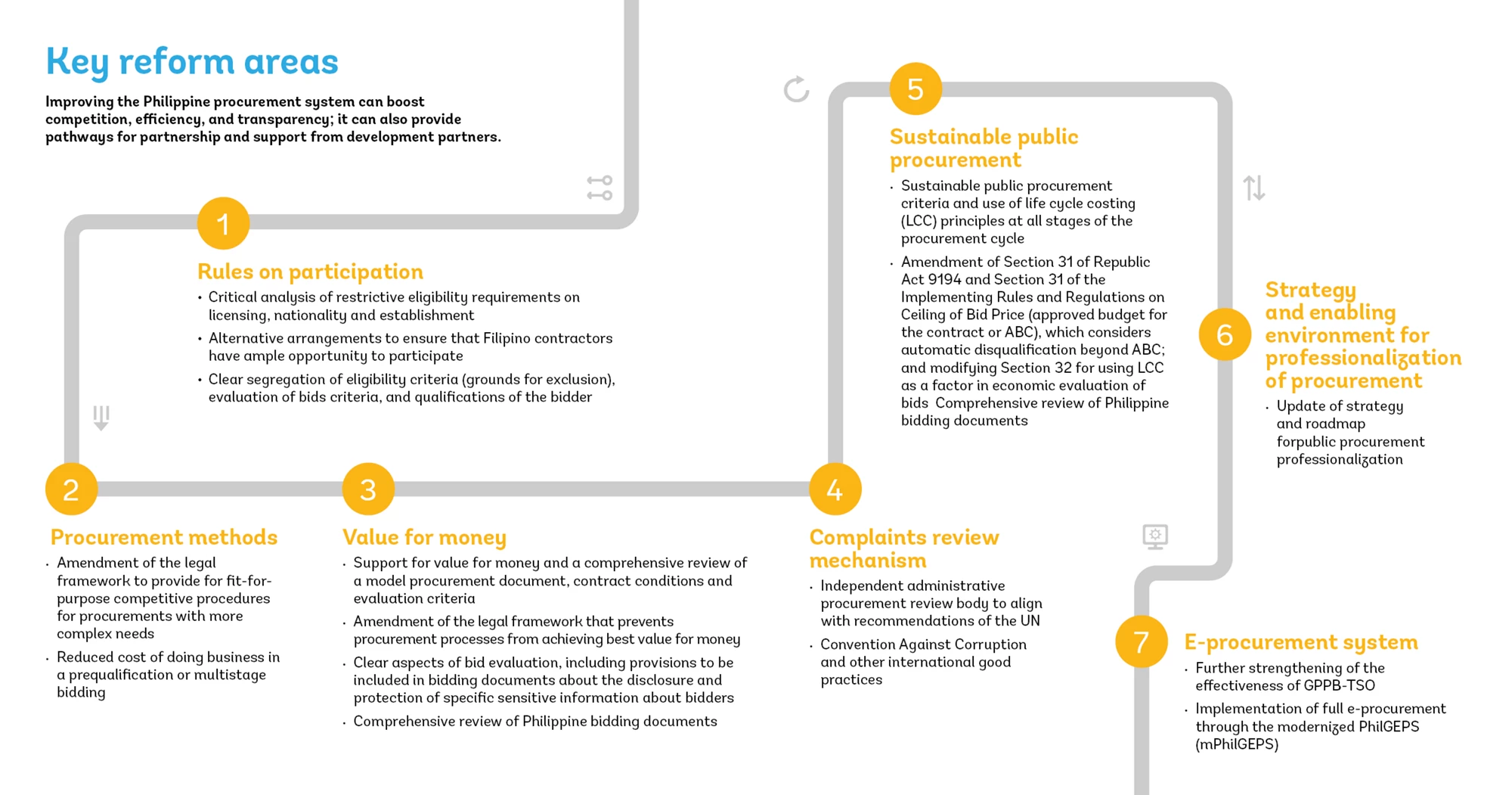 The San Rafael arterial bypass road in Luzon Island, Philippines.
The San Rafael arterial bypass road in Luzon Island, Philippines.
Over the past few months, the Philippine Congress has been busy with deliberations on the highly anticipated amendment to the Procurement Law.
There’s a palpable optimism about the proposed amendment, in part because it echoes the reforms put forward in the Methodology for Assessing Procurement Systems or MAPS assessment conducted in the Philippines two years ago. MAPS is a globally recognized standard for evaluating and analyzing the effectiveness and efficiency of government procurement systems.
One proposal that made it to Congress is the fit-for-purpose approach in procurement that aligns the level of scrutiny done on public biddings and contracts with the complexity of projects. This strategic approach is critical amid the government's substantial procurement undertaking of around 40 to 45 percent of the annual budget, significantly surpassing the global average earmarked for such endeavors. The impetus behind this surge has been the expansive ’Build Build Build’ infrastructure program of previous years, which continues under the current administration's ’Build Better More.’
Against the backdrop of managing government spending, procurement can be a catalyst for ensuring that public funds are spent for the purpose they are intended for and that we get value for money for the goods and services we procure. Here, we’re looking at significant cost savings with projected reductions of 26 to 29 percent in the government’s overall procurement spending by designing and implementing better strategies and policies, which will ultimately improve the delivery of public services for Filipinos.
Evidence-based policymaking
The Philippine procurement has had notable reforms in the past, such as the Government Procurement Reform Act of 2003, which standardized procurement practices, established the Government Procurement Policy Board (GPPB) as a regulatory body through the Technical Support Office (TSO), and mandated the use of the Philippine Government Electronic Procurement System or PhilGEPS.
In 2019, we realized much work remained to be done and that a MAPS assessment would provide a more evidence-based foundation for our recommendations.Eight months into the MAPS assessment, the COVID-19 pandemic forced a lockdown, but we made it work despite the restrictions. The strong collaboration between the GPPB-TSO, the World Bank, and the Asian Development Bank contributed to having a thorough and robust analysis.
Reflecting on the journey, we find that the use of technology was instrumental in generating data for analyzing various indicators such as legal, regulatory, and policy framework, accountability, integrity, and transparency. The MAPS assessment highlighted seven reform areas (see figure below) that helped guide policymaking and led to proposed legislative amendments.
MAPS recommendations for key reform areas
Transparency and accountability for the assessment recommendations
In September 2023, the OECD MAPS Secretariat and the MAPS Technical Advisory Group endorsed the MAPS Philippine report, which highlighted several red flags, including the need for effective sanctions and enforcement systems.
Nonetheless, we needed those evidence-based findings to legitimize the proactive measures that the government took post-assessment. One of those is the beneficial ownership initiative to identify and disclose individuals who ultimately own or control a legal entity involved in the procurement process. Understanding and disclosing beneficial ownership is a critical component of transparency and integrity in procurement systems since some of the biggest corruption cases involved spurious entities , and we need to stem those illicit activities.
MAPS also strengthened the partnership between GPPB and the World Bank on sustainable and green public procurement, which is supported through the World Bank’s Philippine Sustainable Recovery Development Policy Loan.
This partnership extends to several other initiatives, including expanding the use of framework agreements to ensure better value for money and fiscal savings in infrastructure and consulting services, modernizing the current government's professionalization program to enhance the skills of procurement professionals, and updating the procurement observers’ guide and setting up a portal where they can access procurement documents, a move that is expected to improve transparency and citizen engagement.
Our journey through transformative procurement reforms in the Philippines hasn't been easy. As we approach potential changes to the Procurement Law, we count on evidence-based policymaking, collaboration, and political will to translate lessons into practical reforms for enhanced governance effectiveness.




Join the Conversation